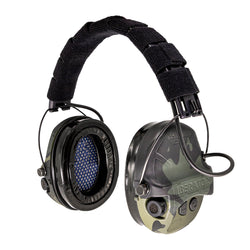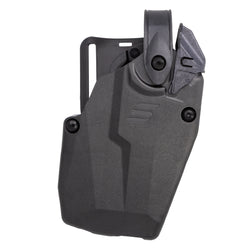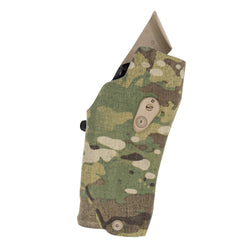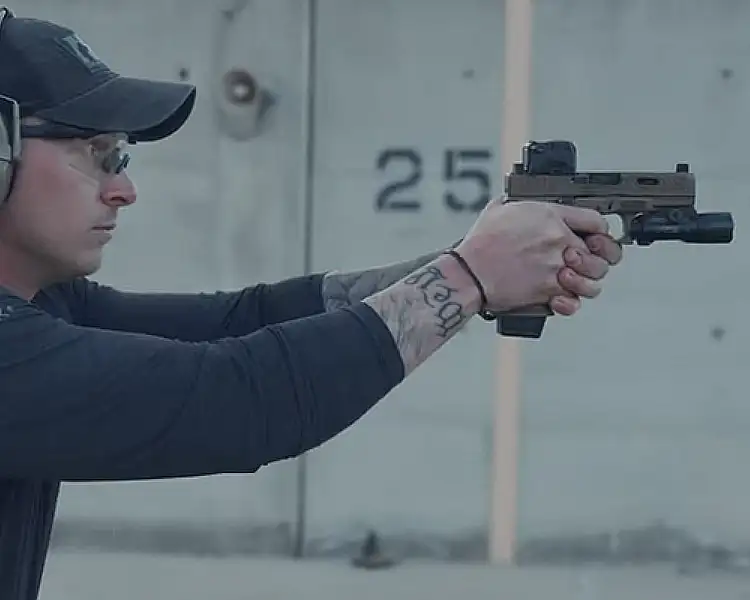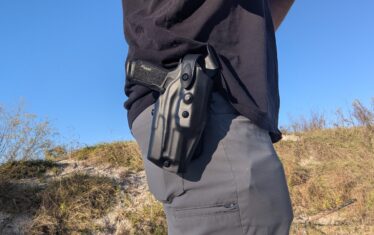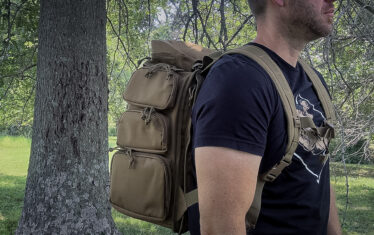Do you get tired of shooting against a shot timer? Does it seem like all you’re doing is racing the clock without developing actual skills for real-world benefit? Safariland CADRE Rick Crawley, founder of Achilles Heel Tactical, shows you how to add context to your timer work with the Command Drill.
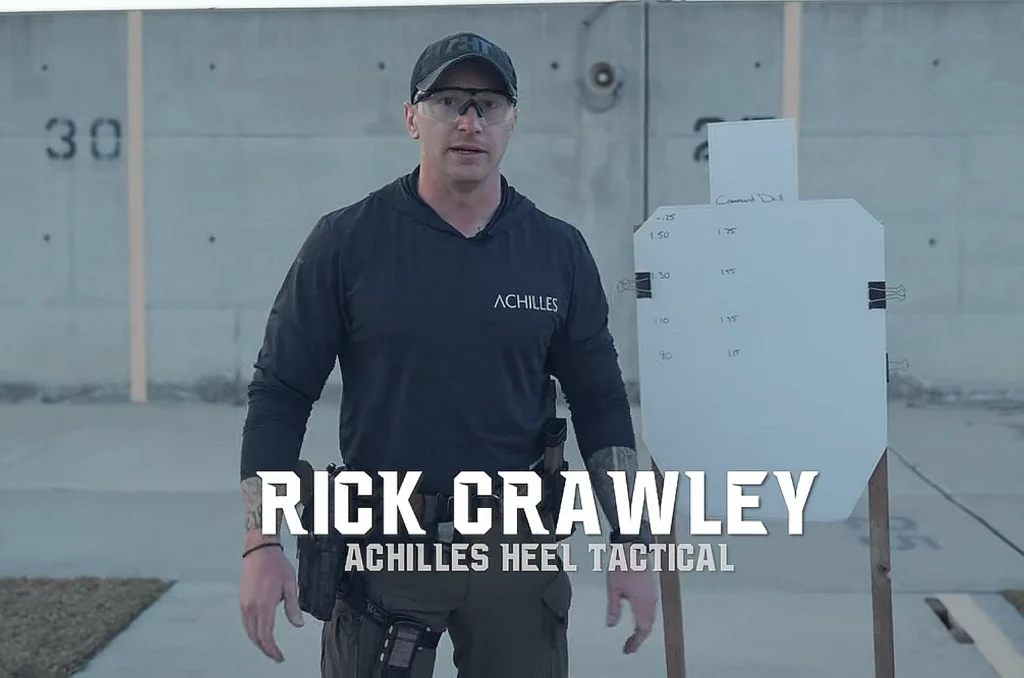
Many of us get caught in the rut of beating the timer on the draw, breaking a shot, or completing a certain shot string. The only context is hitting the target before the timer beeps again.
You can still do that, but incorporating the Command Drill will break your movements down into segments that can be studied, understood, and improved. That process will help your fundamentals and increase your efficiency.
The key is changing the role of the second beep. That second beep, in simple drills, marks the time limit to complete the current exercise. But in the Command Drill, the second beep serves as the command to execute the drill’s second phase, which is the actual shot or shots.
That opens the door to evaluating parts of your process and fundamentals that merely racing to beat the second beep glosses over.
The Command Drill Process
Rick begins the Command Drill with a prescribed time to draw and present his pistol, obtaining a good sight picture.
The timer’s first beep prompts the draw.
The second beep is programmed for 1.5 seconds after the first, allowing ample time for drawing and presenting. The second beep is Fire command.
The goal is to fire on the front of the beep rather than its tail end. Rick describes it as firing on the “B-E” as opposed to the “P.”
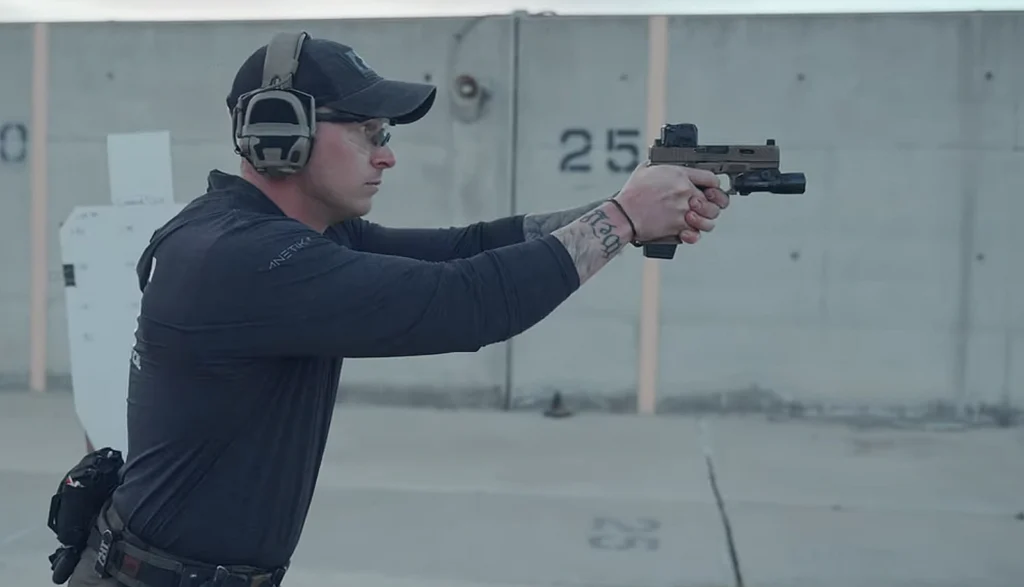
1.5 seconds may not seem like much time to draw, present, and get the sight picture. For a beginner, it may not be. Rick uses that time as a beginning point. It can be adjusted higher if it’s too fast for a new shooter.
But 1.5 seconds can seem like an eternity to an experienced shooter. Wherever your skill level falls, beginning with the correct time increment provides the opportunity to observe and improve the fundamental skills necessary for an effective draw stroke, presentation, and target acquisition.
Like the old saying goes, “Slow is smooth and smooth is fast.” Gaining smoothness through proper fundamentals will allow you to lower that initial time increment as your speed improves.

The “Response Beep”
Rick calls the second beep the “Response Beep.” Shot timers will mark the times of gunshots in a given drill. The response beep measures your response time to its fire command.
Let’s return to the 1.5-second time between the initial beep and the response beep. The 1.5 seconds is your unchanging base time that’s used to evaluate the fundamentals of getting you on target.
The second beep, the response beep, measures how quickly you act upon the information presented by your sight picture. You can isolate that part of your shooting operation by using that response beep instead of drawing, presenting, and firing as part of a single timed exercise.
Your unchanging 1.5-second base is not counted in evaluating your response. So, if your total time to shot is 1.62 seconds, you know that your response time is .12 seconds. You can work to improve that, knowing that it’s measured separately from your base draw and present time.

Advancing the Command Drill
Practice will allow you to decrease your base draw and present time. If you begin at Rick’s 1.5 seconds, you can evaluate how long you’re waiting before the response beep. If you’re noticeably waiting with a good sight picture, and your fundamentals are sound, it’s time to drop that base time.
How far to drop your time may require a bit of trial and error. Not dropping it enough will still have you waiting. Dropping it too much will make your fundamentals sloppy as you try to keep up, rush your sight picture, or both.
The best practice will be to reduce it slowly until you aren’t waiting for the response beep without compromising your fundamentals. Working at that speed will give you quality reps that will allow you to reduce your base time further as you acclimate and improve.
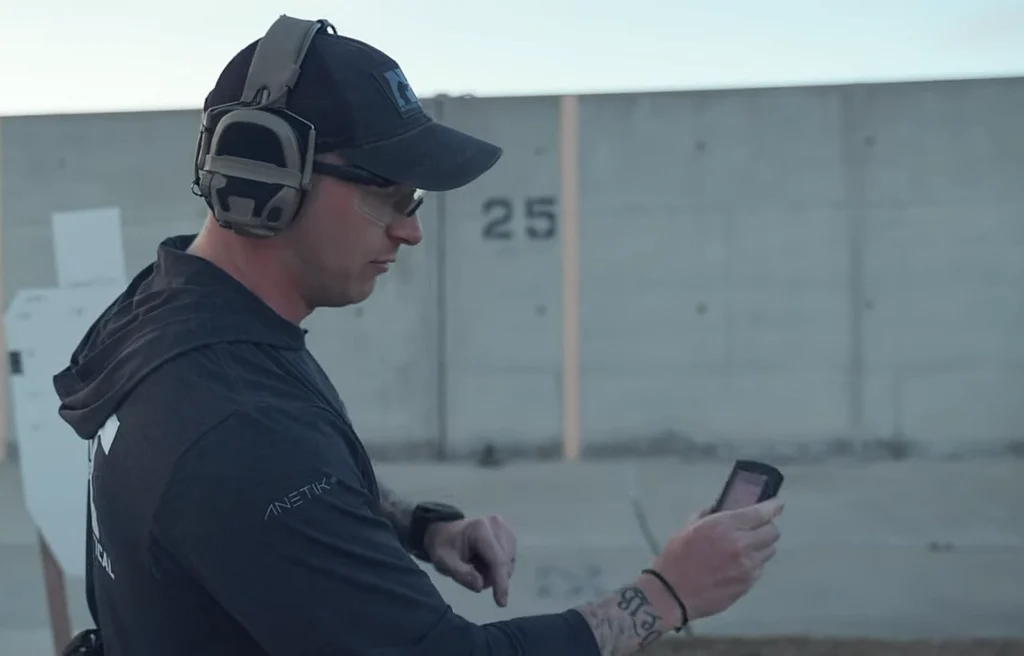
Putting the Command Drill Together
Understanding how each phase of the Command Drill complements the other allows you to maximize the benefit. A smooth, fundamentally sound first phase puts you in position for a quick, accurate shot in the second phase.
The Command Drill is a great exercise for shooters of every skill level. Champion shooters run drills like this, and they do it for a reason. But make certain to apply the skills that the Command Drill imparts to realistic scenarios where you aren’t firing on a beep.
Repping the drill properly will develop the smooth muscle memory between phases to make it one motion. Those drill reps will also condition you to evaluate your fundamentals as you work, whether against the timer or not.
A Versatile Exercise
The Command Drill’s basic tenets can be applied to various other exercises. Rick demonstrates it for rifle/pistol transitions. You can use it with live fire, dry fire, or a hybrid of both. The point is breaking actions down into their component parts, allowing you to work on each part’s fundamentals before reassembling them.
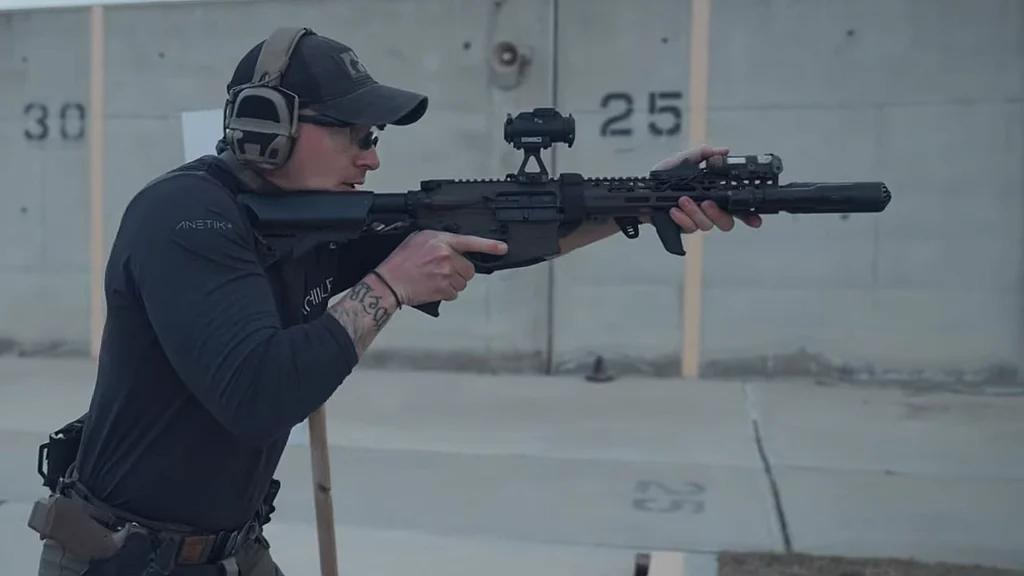
This is a basic coaching technique across all sports, not just shooting. Go to any football or baseball practice and you’ll see similar things if you pay attention.
The Command Drill is based on solid, proven principles. Check out the video for more details and demonstrations.


